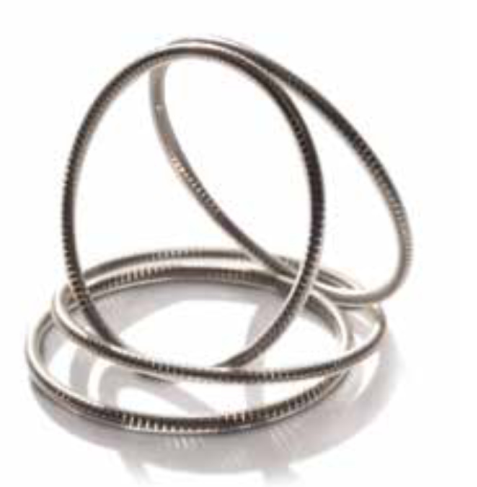In various industries, the need for reliable seals that can withstand harsh environments and extreme conditions is paramount. Whether in the automotive, chemical processing, or pharmaceutical sectors, having seals that provide exceptional performance and durability is crucial for the overall efficiency and safety of operations. One type of seal that has gained significant popularity in recent years is FEP encapsulated seals.

FEP (Fluorinated Ethylene Propylene) seals offer a unique combination of properties that make them ideal for various applications. In this article, we will explore what FEP encapsulated seals are, how they enhance performance and reliability, their benefits over traditional sealing materials, and some frequently asked questions about these innovative sealing solutions.
What are FEP Encapsulated Seals?
FEP encapsulation involves coating a substrate material with a thin layer of FEP resin to create a protective barrier around it. The substrate material can vary depending on the application requirements but commonly includes elastomers such as silicone or Viton® with a helical spring for cryogenic applications. This combination of materials results in a seal that combines the flexibility and resilience of elastomers with the chemical resistance and low friction properties of fluoropolymers like FEP.
The process typically involves molding or bonding the substrate material into its desired shape before applying an even layer of FEP resin. The coated part is cured at high temperatures to ensure adhesion between the two materials. This encapsulation technique protects against harsh chemicals, extreme temperatures (-200°C to +205°C), high pressures (up to 1500 psi), and wear and tear caused by friction.
Advantages Over Traditional Sealing Materials
Exceptional Chemical Resistance
One key advantage offered by FEP encapsulated seals is their outstanding chemical resistance. Fluoropolymers like FEP inherently resist various aggressive chemicals, including acids, bases, solvents, and corrosive gases. This makes them highly suitable for applications in chemical processing plants where exposure to harsh substances is daily.
Temperature Resistance
FEP seals exhibit excellent temperature resistance properties. They can withstand extreme temperatures ranging from -200°C to +205°C without losing their integrity or functionality. This ability to perform reliably in both high and low-temperature environments makes them ideal for applications such as cryogenic systems or high-temperature ovens.
Low Friction Coefficient
The low friction coefficient of FEP encapsulated seals allows for smooth movement and reduced wear between mating surfaces. This property is particularly beneficial in dynamic sealing applications where frequent motion or sliding occurs. By minimizing friction and wear, FEP encapsulated seals help extend the lifespan of the sealing system and reduce maintenance requirements.
High Purity Applications
FEP seals are widely used in industries that require high-purity environments, such as pharmaceutical manufacturing or food processing. The inert nature of fluoropolymers ensures they do not introduce contaminants into the process media or compromise product integrity. Additionally, these seals comply with various industry standards for cleanliness and purity.
FEP encapsulated seals offer a unique combination of properties that make them highly desirable in numerous industries. With exceptional chemical resistance, temperature resistance, low friction coefficient, and suitability for high-purity applications, these innovative sealing solutions enhance performance and reliability in challenging environments. By understanding their benefits over traditional sealing materials, it is clear that FEP encapsulated seals are a smart choice for organizations seeking to improve efficiency and longevity in their operations.
Frequently Asked Questions (FAQs)
Q1: What types of applications benefit from using FEP encapsulated seals?
A1: FEP seals find application in various industries, including chemical processing plants, pharmaceutical manufacturing, automotive engineering, aerospace technology, food processing facilities, and more.
Q2: Are there any limitations to using FEP seals?
A2: While FEP encapsulated seals offer numerous advantages over traditional sealing materials, it’s essential to consider their compatibility with specific chemicals or operating conditions before implementation. In some cases where highly aggressive chemicals are present at elevated temperatures above 205°C, alternative sealing solutions may be required.
Q3: Do FEP encapsulated seals require special installation or maintenance procedures?
A3: No, installation of FEP encapsulated seals uses standard sealing methods and does not require any special procedures. However, it is essential to ensure proper alignment and mating of the seal to optimize performance and prevent premature failure.
Q4: Can FEP encapsulated seals be customized to specific sizes or shapes?
A4: Yes, one of the advantages of FEP encapsulation is its ability to conform to various substrate shapes and sizes. Customization options are available to meet the requirements of different applications.
Q5: Are there any environmental benefits associated with using FEP-covered seals?
A5: Yes, FEP seals are environmentally friendly due to their long lifespan, low maintenance requirements, and recyclability. They help reduce waste by minimizing the need for frequent replacements and contribute towards sustainable manufacturing practices.

